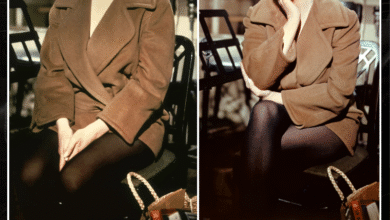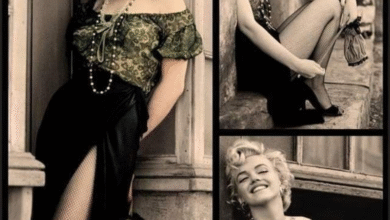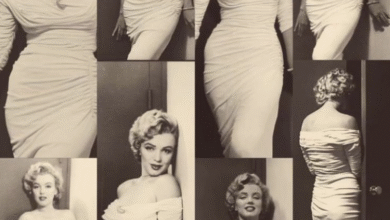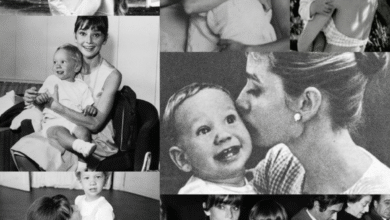Elizabeth Olsen’s Most Cherished Role—You Won’t Believe Which Character Holds Her Heart
OPINION: This article may contain commentary which reflects the author's opinion.
Scarlett Johansson has become one of Hollywood’s most celebrated actresses, known for her diverse roles in films like Lost in Translation (2003), The Avengers series, and Marriage Story (2019). With a career that spans from her childhood to adulthood, Johansson has always been deeply connected to her craft, drawing inspiration from several key figures in the industry. This article delves into the influences that have shaped her acting style and career, from legendary Hollywood icons to rigorous training in acting technique.
Early Influences: The Foundation of Her Career
Johansson’s career began at a young age, with her mother taking her to auditions when she was just a child. At eight years old, she made her stage debut in an off-Broadway production of Sophistry alongside Ethan Hawke. This early exposure to the world of acting laid the foundation for her future career and likely played a role in the development of her personal inspirations. Growing up, Johansson looked to various figures for inspiration, both for their emotional depth and their approach to performance.
Judy Garland: Emotional Purity in Performance
One of Scarlett Johansson’s most cited inspirations is the legendary actress and singer Judy Garland. Known for her unforgettable performances in The Wizard of Oz (1939) and Meet Me in St. Louis (1944), Garland was a quintessential Hollywood star whose performances conveyed a deep emotional purity. According to Far Out Magazine, Johansson has described Garland’s acting as “emotionally pure and available,” qualities that she deeply admires and strives to emulate in her own work. In fact, Johansson even practiced Garland’s role in Meet Me in St. Louis in front of the mirror, highlighting the personal connection she felt to Garland’s emotional depth. Garland’s ability to convey raw emotion in a way that felt both authentic and accessible had a significant impact on Johansson’s approach to her performances, particularly in more dramatic roles.
Winona Ryder: Openness and Vulnerability
Another key influence on Johansson’s career is actress Winona Ryder, particularly her performance in Edward Scissorhands (1990). Ryder’s portrayal of Kim, a vulnerable and open-hearted young woman, resonated deeply with Johansson, as noted by Far Out Magazine. Johansson admired Ryder’s ability to balance intensity with relatability—traits that have become integral to her own performances. Additionally, both actresses share roots in Minnesota, adding a personal layer to this inspiration. Ryder’s emotional vulnerability on screen helped Johansson shape her own screen presence, particularly in roles that require deep emotional connection, such as in Her (2013). Johansson has often spoken about the significance of vulnerability in acting, and Ryder’s performances provided a powerful example of how to achieve this balance.
Lee Strasberg: A Foundation in Method Acting
Beyond personal inspirations from Hollywood legends, Scarlett Johansson’s professional development was influenced by the teachings of Lee Strasberg, a pioneer of method acting. Johansson attended the Lee Strasberg Theatre Institute, where she honed her craft and further developed her acting technique. While Strasberg’s influence is more technical than personal, his impact on Johansson’s approach to acting is evident in her ability to dive deep into complex characters. Method acting, which emphasizes emotional truth and immersive preparation, provided Johansson with the tools to embody a wide range of roles across genres—from comedy in He’s Just Not That Into You (2009) to the chilling, otherworldly performance in Under the Skin (2013). Strasberg’s teachings allowed Johansson to approach each role with a commitment to authenticity, supporting her versatility as an actress.
Impact on Johansson’s Career and Roles
These three figures—Garland, Ryder, and Strasberg—have had a profound influence on Johansson’s career, shaping both her acting style and the roles she chooses. Garland’s emotional authenticity can be seen in Johansson’s nuanced performances in films like Marriage Story, where she portrays the raw, painful complexities of divorce. Ryder’s openness and vulnerability resonate in her portrayal of characters like the introspective Charlotte in Lost in Translation, and in her empathetic turn as the AI Samantha in Her. Meanwhile, Strasberg’s method acting techniques are reflected in Johansson’s capacity to fully inhabit her characters, allowing her to move seamlessly from drama to sci-fi to comedy.
Beyond the Screen: Personal Inspirations and Collaborations
While the primary influences on Johansson’s career come from legendary actresses and method acting training, it’s worth noting her early collaborators, such as Ethan Hawke, and the influence of her family, especially her sister Vanessa Johansson, who is also an actress. These relationships, though not explicitly mentioned as her main inspirations, have likely shaped her personal and professional growth, contributing to the development of her authentic acting style.
Conclusion: A Blend of Personal and Professional Inspirations
Scarlett Johansson’s career has been built on a foundation of diverse influences, from the emotional purity of Judy Garland’s performances to Winona Ryder’s raw vulnerability and the technical expertise of Lee Strasberg’s method acting. These figures have provided Johansson with the tools to approach her craft with both depth and authenticity, enabling her to create memorable, multifaceted characters across a wide array of genres. As Johansson continues to evolve as an actress, these inspirations will likely remain integral to her approach to both her personal and professional life, making her one of the most versatile and compelling performers of her generation.



